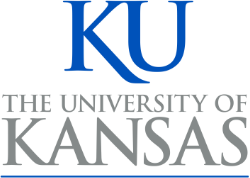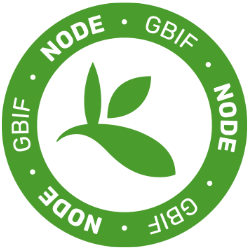On 30 June 2012, iDigBio completed its first year of operation. As the national resource for the NSF-funded Advancing Digitization of Biodiversity Collections(ADBC), our first year required that we identify and overcome major organizational hurdles as we develop a national infrastructure for the ADBC institutions. We are pleased to report that our first year was highly successful. In this article, we enumerate some of our major activities and accomplishments.
![]() The mission of iDigBio is to develop a national infrastructure that supports the vision of ADBC by overseeing implementation of standards and best practices for digitization. iDigBio hosted and attended summits, workshops, and symposia to further this mission:
The mission of iDigBio is to develop a national infrastructure that supports the vision of ADBC by overseeing implementation of standards and best practices for digitization. iDigBio hosted and attended summits, workshops, and symposia to further this mission:
A summit was held on 30 Nov.-1 Dec.1, 2011 to initiate dialog between iDigBio, Thematic Collections Networks (TCNs) and other digitization projects. Participants provided insight into activities and resources available to the community and clarified participant roles and expectations, procedural requirements, and needs within the community.
- You can review all of the summit presentations here: https://www.idigbio.org/forums/idigbio-2011-summit
- A full wrap up of the summit can be found here: https://www.idigbio.org/content/idigbio-summit-wrap
An IT Informatics and Cyberinfrastructure Workshop was held on 28-30 March, 2012, and focused on standards and cyberinfrastructure requirements for scientific collections and biodiversity research. The biodiversity informatics community has made significant progress in developing tools, practices and standards; participants concentrated on identifying critical gaps in the infrastructure and training that need to be a focus of future activities.
A Paleocollections Digitization Workshop was held on 26-28th April, 2012. In this workshop, participants assessed the status and future of digitized collections within the paleontological community, articulated Grand Challenges, and identified “next steps.” This workshop enables workers to move forward with coordinated specimen digitization efforts within the paleontological community and at the same time utilize methods compatible with the neocollections digitization community.
A workshop, Developing Robust Object-to-Image-to-Data (DROID) Workflow, was held on 30-31 May, 2012. This workshop focused on the design, documentation, and optimization of workflows necessary to transform physical specimens collected in the field into useful, shareable, and manageable digital objects within a collection.
A symposium, “Building a High-Resolution, Specimen-Based Picture of Life: Possibilities and Challenges”, was held at the Botany 2012 Conference on 12 July, 2012. This symposium focused on the task of building a high-resolution, specimen-based picture of life on Earth via databasing and imaging of the estimated one billion specimens in U.S. biodiversity collections.
![]() iDigBio involves the development of a permanent and powerful cloud computing infrastructure to link biological data from collections across the U.S. into a single unified web interface, overcoming the “data silos” that currently exist across the country. Computational activities from year one include:
iDigBio involves the development of a permanent and powerful cloud computing infrastructure to link biological data from collections across the U.S. into a single unified web interface, overcoming the “data silos” that currently exist across the country. Computational activities from year one include:
As part of the architectural planning for the storage cloud and specimen database, iDigBio has concentrated on incorporating best practices in scalable and distributed systems architecture from the broader IT community, including research into fundamental architectures of extremely large-scale systems such as Facebook,Twitter, Amazon, Rackspace, etc. Specific areas of focus have been on the scalability of large-scale semi-structured databases.
iDigBio researched and evaluated existing Globally Unique Identification (GUID) systems, circulated information about the GUID systems, and received feedback from consumers that resulted in the 'iDigBio GUID Statement'.
iDigBio has acquired collections datasets to help identify system requirements, test short-, medium- and long-term cyberinfrastructure architecture in development, evaluate the heterogeneity in existing data curated by TCNs, learn where existing vocabulary standards fall short, and obtain examples of queries typical of biological research that will require integration with multiple providers. A technology preview based on these data can be found at portal.idigbio.org.
iDigBio released a call for Community Appliances, discrete computing devices designed to provide a specific computing resource that allows the biocollections digitization community to interact with the iDigBio storage cloud and specimen database. An important activity of iDigBio is to deliver IT infrastructure and services for a highly coordinated biocollections digitization community. To facilitate this, iDigBio will team with developers of tools to help develop, disseminate, and host virtual appliances that will integrate such tools.
![]() ADBC will further the discovery and understanding of biological diversity. iDigBio will engage the research, collections, and education communities in a spirit of collaboration that will open biological research collections to new downstream user communities. Education and outreach events from 2012 include the following:
ADBC will further the discovery and understanding of biological diversity. iDigBio will engage the research, collections, and education communities in a spirit of collaboration that will open biological research collections to new downstream user communities. Education and outreach events from 2012 include the following:
Visits to TCNs and other biodiversity collections digitization projects led to the publication of “Five task clusters that enable efficient and effective digitization of biological collections,” ZooKeys. This paper describes five clusters of related tasks common to efficient and effective practices in the digitization of biological specimen data and media.
iDigBio launched the Visiting Scholars Program for 2013. The program is directed towards early-career collections and informatics-based professionals with an interest in digitization, particularly those who broaden representation.
In February, 2012, Bruce MacFadden presented a talk entitled 'Fossils in the Cloud' at the monthly meeting of the Tampa Bay Fossil Club. This outreach activity will be extended in the future through continued presentations by Dr. MacFadden, development of an online version of the presentation for national consumption, and a 'train the trainer' extension that will enable paleontologists nationally to deliver this presentation to their local communities.
In October of 2011, iDigBio was represented by iDigBio project staff and Principal Investigator Larry Page at the Florida Museum of Natural History “ButterflyFest”. This annual festival is dedicated to increasing awareness of Florida's butterflies as fun, fascinating ambassadors to the natural world. iDigBio staff promoted inquiry about biodiversity and the grand challenges of the digitization community while advancing a call to action for the conservation and preservation of backyard wildlife and habitats.
The Florida Museum of Natural History research departments set up displays at the McGuire Center for Lepidoptera and Biodiversity on April 21, 2012, to showcase the importance of biodiversity and of museum collections and research for Earth Day. iDigBio was invited to participate in this outreach event and staff created an interactive display that enabled event visitors to participate in specimen digitization. In a process developed by iDigBio collaborating institutions, participants were guided by iDigBio project staff through workflows for specimen imaging; the resulting images were posted to the iDigBio Facebook page.







